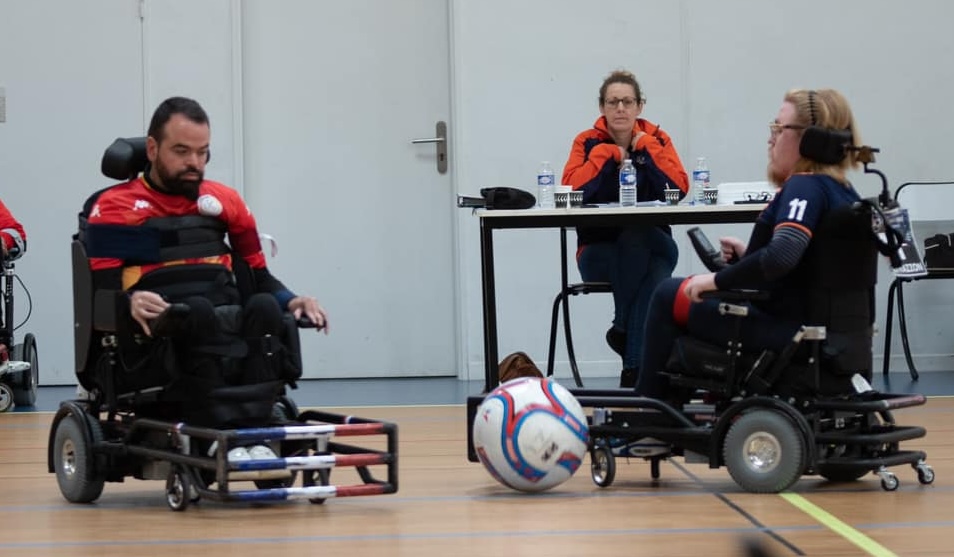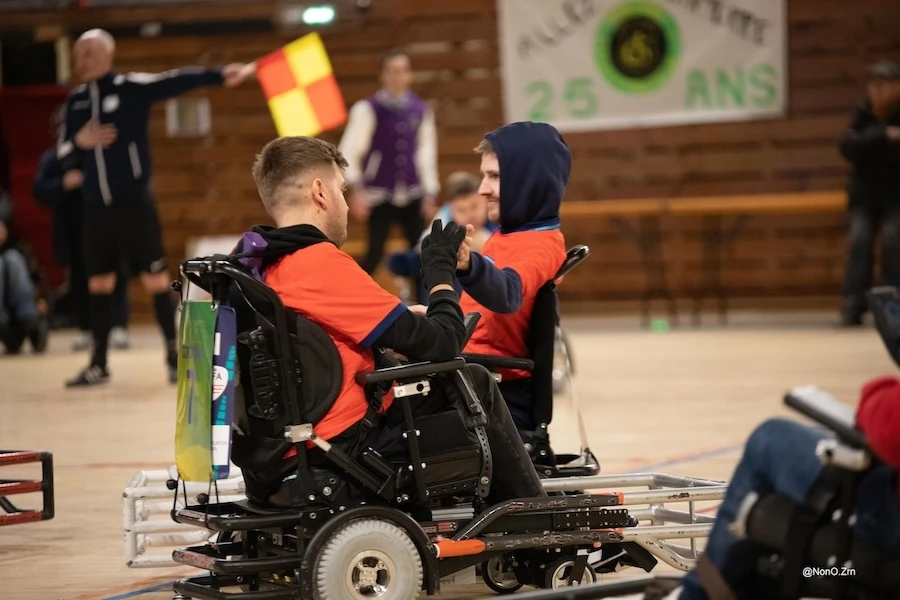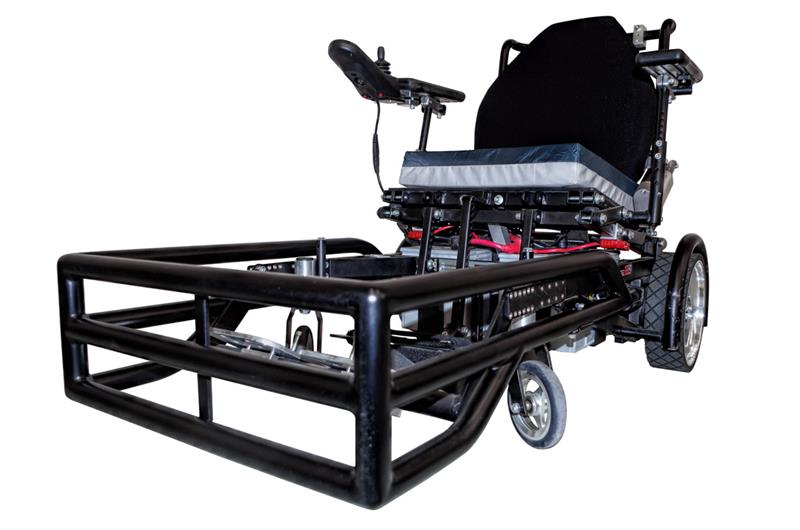What is Powerchair football
History

Rules
Powerchair football is played on a standard basketball court with four players per team, including the goalkeeper. Matches consist of two 20-minute periods. Unique rules include :
- "2-on-1," where two players from the same team cannot be within 3 meters of the ball simultaneously, and
- "3-in-the-goal-area," limiting the number of players allowed in the goal area.
Referees may refrain from calling infractions if they do not affect play. The game employs kick-ins instead of throw-ins, allowing goals to be scored directly from them. Intentional striking of players results in penalties.
FIPFA has a classification system determining players' eligibility and grouping based on physical and psychological abilities. Players must have a confirmed disability to participate, with two levels of classification: PF1 and PF2. Teams are restricted to a maximum of two PF2 players on the court simultaneously. Violations result in penalties, and teams must rectify noncompliance at the next stoppage.

The Equipment
Players must use a powerchair with at least four wheels, with a maximum speed of 10 km/h (6.2 mph) inspected by referees before matches. Mandatory equipment includes a lap belt and foot guard. The ball used is an oversized soccer ball, 13 inches (33 cm) in diameter. In 2012, the Strikeforce, the first power wheelchair specifically designed for powerchair football, was introduced. Developed in Minnesota by the Power Soccer Shop, it features a longer foot guard, wider wheelbase, and enhanced responsiveness. The Strikeforce's adoption has expanded across Asia, Europe, and the Americas.

